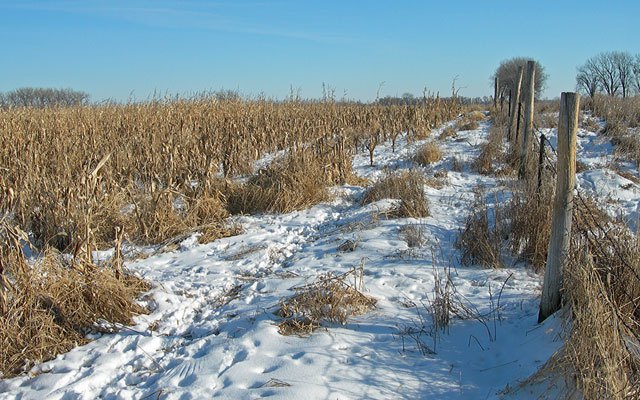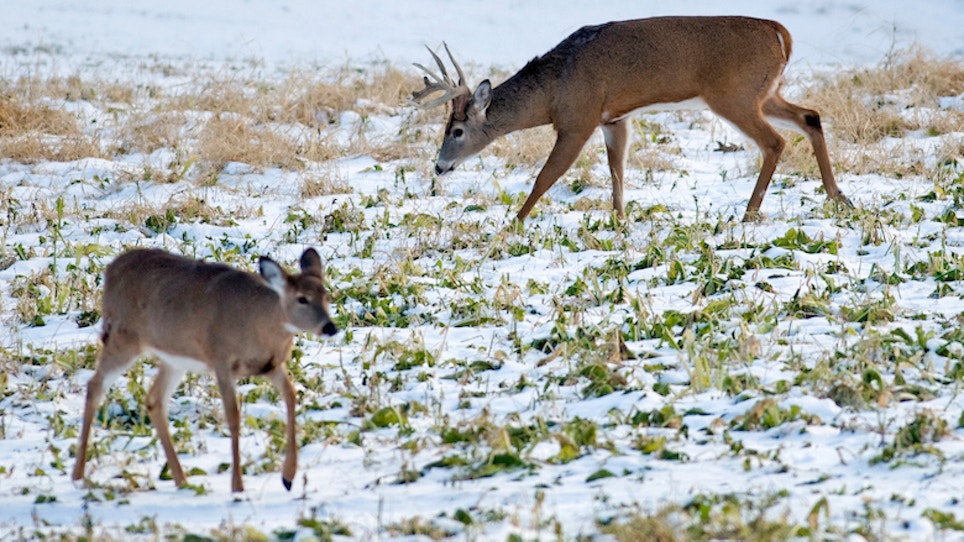When scavenging for food in food plots or agricultural fields, whitetail deer prefer to eat corn, soybeans or cowpeas lying on the ground or atop the snow. They do not like to pluck food from standing stalks. In fact, they’ll walk past row after row of standing crops and scavenge for hours on harvested fields.
To ensure deer shift their feeding locations to reduce disease risks, landowners can knock down a few rows of crops every few days with an ATV or truck.
Hunters who maintain food plots often debate whether corn, soybeans or brassicas work best for late-season forage. Corn is likely the least beneficial for deer and hunting as a food-plot offering, partly because it’s so common in farm country. Try planting varieties of all three, staggering their planting time, variety and locations to disperse feeding activity and increase the time window in which late-season deer visit these sites.

Landowners can knock down a few rows of crops every few days with an ATV or truck to encourage deer to shift their feeding locations.
What about forest or big-woods deer? Even with a low metabolism and an inactive lifestyle that comes later in winter, the whitetail’s basic energy needs often exceed the fuel it extracts from woody browse such as the twigs and buds of ash, hemlock, aspen, maple, hazelwood and red osier dogwood.
The only woody browse that can sustain deer through 100 days in a deeryard is white cedar, but whitetails require 3- to 6-pound quantities daily, a major undertaking in heavily browsed deeryards.
Another favorite item on the winter menu of forest deer is “Old Man’s Beard,” a gray arboreal lichen resembling Spanish moss. These lichens grow on dead or dying spruce and balsam trees. If you find deer tracks converging on a long-dead tree that toppled recently, look for lichen “beards” on branches beyond the deer’s reach. Lichens are part algae and part fungus and are rich in nutrition, especially the “micro-nutrients” that apparently help deer survive harsh winters.
Remember, too, that deer like to bed as close as possible to food sources to reduce energy demands, which increase the farther they walk. Therefore, scout for dense bedding cover near food. Whether it’s big-woods cedar bottoms or a woodland thicket brimming with prickly ash, grape vines and blackberry stalks, the densest cover usually holds late-season deer. Deer retreat to these thick sanctuaries to avoid human activity and/or to escape energy-robbing wind chills.
Related: Hunting Whitetails In Extreme Cold Weather
Featured photo: John Hafner Photography






